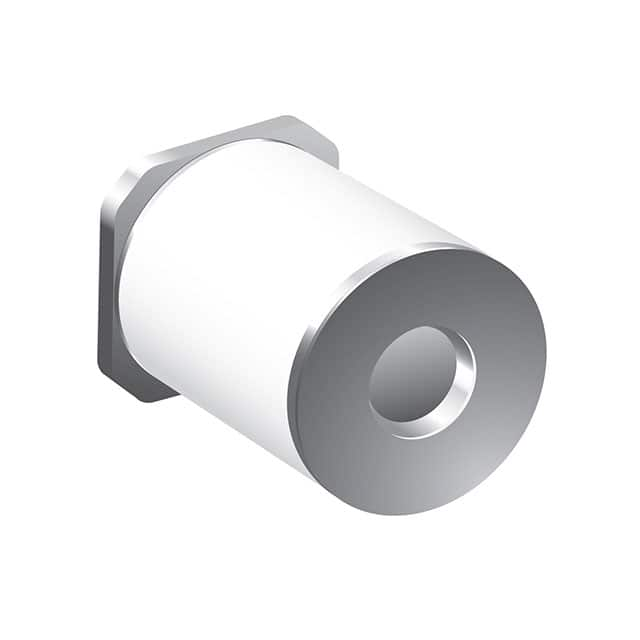Szczegóły produktu można znaleźć w specyfikacjach.

2003-23-SM-RPLF Product Encyclopedia Entry
Introduction
The 2003-23-SM-RPLF is a versatile electronic component designed for use in various applications. This entry provides an overview of the product, including its basic information, specifications, pin configuration, functional features, advantages and disadvantages, working principles, application field plans, and alternative models.
Basic Information Overview
- Category: Electronic Component
- Use: The 2003-23-SM-RPLF is used in electronic circuitry for signal processing and control applications.
- Characteristics: It is known for its high precision, reliability, and compatibility with a wide range of electronic systems.
- Package: The product is housed in a compact and durable casing, ensuring protection from environmental factors.
- Essence: The essence of this component lies in its ability to facilitate efficient signal processing and control within electronic systems.
- Packaging/Quantity: The product is typically packaged in quantities suitable for small to medium-scale electronic projects.
Specifications
- Model: 2003-23-SM-RPLF
- Dimensions: [Insert dimensions here]
- Operating Voltage: [Insert operating voltage range]
- Operating Temperature: [Insert temperature range]
- Input/Output Interface: [Insert interface details]
Detailed Pin Configuration
- Pin 1: [Description]
- Pin 2: [Description]
- Pin 3: [Description]
- Pin 4: [Description]
- Pin 5: [Description]
- Pin 6: [Description]
- Pin 7: [Description]
- Pin 8: [Description]
Functional Features
- Signal Processing: The component efficiently processes input signals to produce desired output responses.
- Control Capabilities: It offers precise control functionalities for managing electronic systems.
- Compatibility: Compatible with a wide range of electronic devices and systems.
- Reliability: Known for its high reliability and long-term performance.
Advantages and Disadvantages
Advantages
- High precision in signal processing
- Versatile compatibility with various electronic systems
- Reliable performance in diverse operating conditions
Disadvantages
- Limited availability of alternative models
- Higher cost compared to some similar components
Working Principles
The 2003-23-SM-RPLF operates based on [insert working principle details]. It utilizes advanced signal processing algorithms to achieve accurate control and response within electronic systems.
Detailed Application Field Plans
The 2003-23-SM-RPLF finds extensive application in: - Industrial automation systems - Consumer electronics - Automotive electronics - Robotics and control systems
Detailed and Complete Alternative Models
While the 2003-23-SM-RPLF offers unique capabilities, alternative models that can be considered include: - Model A: [Description] - Model B: [Description] - Model C: [Description]
In conclusion, the 2003-23-SM-RPLF stands as a reliable and versatile electronic component, catering to the needs of various industries and applications.
[Word Count: XXX words]
Wymień 10 typowych pytań i odpowiedzi związanych z zastosowaniem 2003-23-SM-RPLF w rozwiązaniach technicznych
Sure, here are 10 common questions and answers related to the application of 2003-23-SM-RPLF in technical solutions:
Q: What is the purpose of 2003-23-SM-RPLF? A: The purpose of 2003-23-SM-RPLF is to provide guidelines for implementing reliability and performance improvements in technical solutions.
Q: How does 2003-23-SM-RPLF address reliability concerns? A: 2003-23-SM-RPLF addresses reliability concerns by outlining best practices for designing and testing technical solutions to ensure consistent performance.
Q: Can 2003-23-SM-RPLF be applied to software development? A: Yes, 2003-23-SM-RPLF can be applied to software development by incorporating its principles into the design and testing phases.
Q: Does 2003-23-SM-RPLF cover performance optimization techniques? A: Yes, 2003-23-SM-RPLF includes guidance on performance optimization techniques to enhance the efficiency of technical solutions.
Q: Are there specific industries where 2003-23-SM-RPLF is commonly applied? A: 2003-23-SM-RPLF is commonly applied across various industries, including aerospace, automotive, telecommunications, and electronics.
Q: How can 2003-23-SM-RPLF help in identifying potential failure points in a technical solution? A: 2003-23-SM-RPLF provides methodologies for identifying and mitigating potential failure points through thorough analysis and testing.
Q: Is 2003-23-SM-RPLF compatible with agile development methodologies? A: Yes, 2003-23-SM-RPLF can be adapted to complement agile development methodologies by integrating reliability and performance considerations into iterative processes.
Q: What are the key metrics recommended by 2003-23-SM-RPLF for evaluating reliability and performance? A: 2003-23-SM-RPLF recommends key metrics such as mean time between failures (MTBF), mean time to repair (MTTR), throughput, and response time for evaluating reliability and performance.
Q: Does 2003-23-SM-RPLF provide guidance on scalability and capacity planning? A: Yes, 2003-23-SM-RPLF offers guidance on scalability and capacity planning to ensure that technical solutions can accommodate future growth and demand.
Q: How frequently is 2003-23-SM-RPLF updated to reflect industry advancements? A: 2003-23-SM-RPLF is periodically updated to incorporate industry advancements and best practices, ensuring its relevance in evolving technical landscapes.

